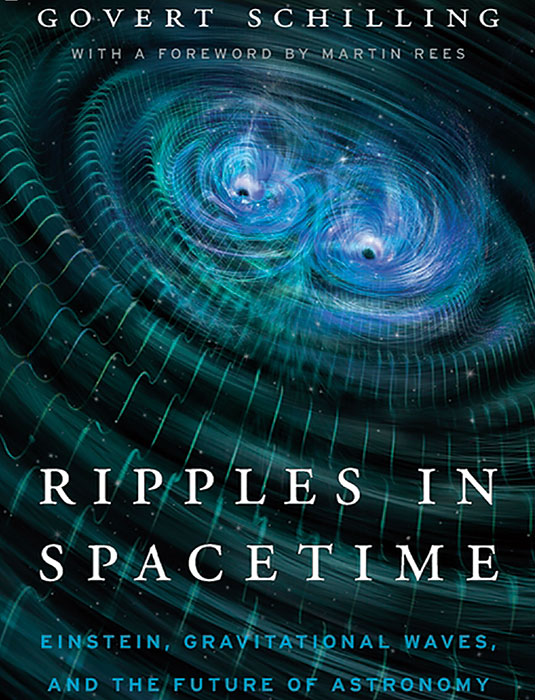By Govert Schilling
The Belknap Press of Harvard University Press

In February 2016 the LIGO and Virgo collaborations announced the first detection of gravitational waves from the collision of two black holes. It was a splendid result for a quest that started about five decades ago with the design and construction of small prototypes of laser interferometers. Since this first discovery, at least five other binary black-hole mergers have been found and gravitational waves from two colliding neutron stars have also been detected. Gravitational-wave science is now booming, literally, and will continue to do so for a long time. The upcoming observational progress in this field will impact the development of astrophysics, cosmology and, perhaps, particle physics.
Govert Schilling is an award-winning science journalist with a special interest in astronomy and space science. In this book, he guides the reader through the development of gravitational-wave astronomy, from its very origin deep in the early days of general relativity up to the first LIGO discovery. He does so, not only by delving into the key moments of this wonderful piece of history, but also by explaining the main physical and engineering ideas that made it possible.
Moreover, Schilling does a very good job discussing the scientific context in which these events and ideas arose. Far from being a mere collection of events, the book offers the reader a journey that goes beyond its title, exploring and connecting topics such as the cosmic-microwave background and its polarisation, radioastronomy and pulsars, supernovae, primordial inflation, gamma-ray bursts and even dark energy. In addition, the last few chapters of the book discuss the science that may come next, when new interferometers will join LIGO and Virgo in this adventure, observing the sky from Earth (e.g. KAGRA) and space (LISA).
The book clearly aims to target a non-specialist readership and will surely be enjoyed by people lacking a prior knowledge of astrophysics, gravitational waves or cosmology. However, this does not mean that readers more well-versed in these topics will find the book uninspiring. Schilling addresses the reader in a direct, entertaining, almost colloquial manner, managing to explain complex concepts in a few paragraphs while keeping the science sound. Besides, the book gives an interesting (and sometimes surprising) glimpse into the lives, aspirations and mutual interactions of the scientific pioneers in the field of gravitational waves.
If an objection had to be found, it would be that in the first chapter the author belittles general relativity by introducing it as “the theory behind [the movie] Interstellar”. If this scares you, read on and fear nothing. As always happens, science outshines fiction, and the rest of the book proves why this is so.








